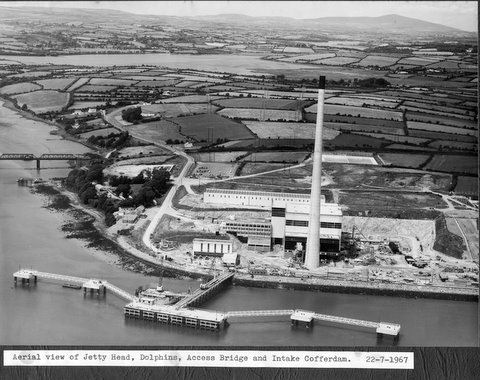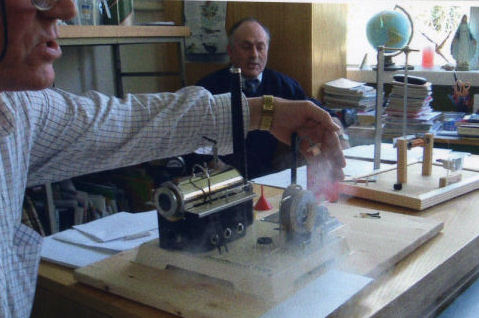|
Great
Island Power Station |
|

Picture of Great
island Power Station
|
Great Island
power station is about 3 miles from our school. The
signpost for it is right outside the school. Great
Island was once called Hervey's Island after the norman
knight Hervey de Monte Marisco. The island no longer
exists. Great Island was the first oil power station to
be built outside our main cities of Dublin and Cork.
The building of the
station started in 1963 and finished in 1967. It was
opened by P.J Lawlor in Nov.1968 and blessed by Bishop
Donal Herlihy the then Bishop of Ferns. It is built on
168 acres of land.The station is built near where the
River Barrow joins the River Suir.The fuel used is oil.
It was built on the River Barrow so that oil tankers can
bring oil in. The oil is stored on oil farms at the
station. There are 2 small generators of 60 megawatts
and a larger one at 120 MW. There are 5 huge storage
tanks and each holds 17,000 tons of oil. There are two
compounds with transformers also.
The oil is heated to a temperature of 135°C in the
burners. The steam made is then used to turn blades in
the turbine and this drives the generator. A generator
is like an electric motor with a magnet surrounded by
coils of wire which spin. Next, the electricity
made is sent to a transformer and then is fed to the
National Grid. All the power stations feed into the
grid.
The chimneys are 450 feet high. Huge silencers were
installed so that local people will not be annoyed by the
noise when the sets or generators are starting up.
In 1993 they refurbished the station and it cost 9
million pounds. All waste is treated at the station so
that there is no pollution.
At the moment the E.S.B employs 70 workers at Great
Island station. |
|

|
|
The Power Station under
construction in 1967. |
|

|
|
John Stafford, a
worker in Great Island power station, demonstrates the
working of a miniature steam engine for 5th and 6th
class pupils. This is the same principle that the power
station uses to generate electricity. |
|
|
|
Please
return to Local History |

